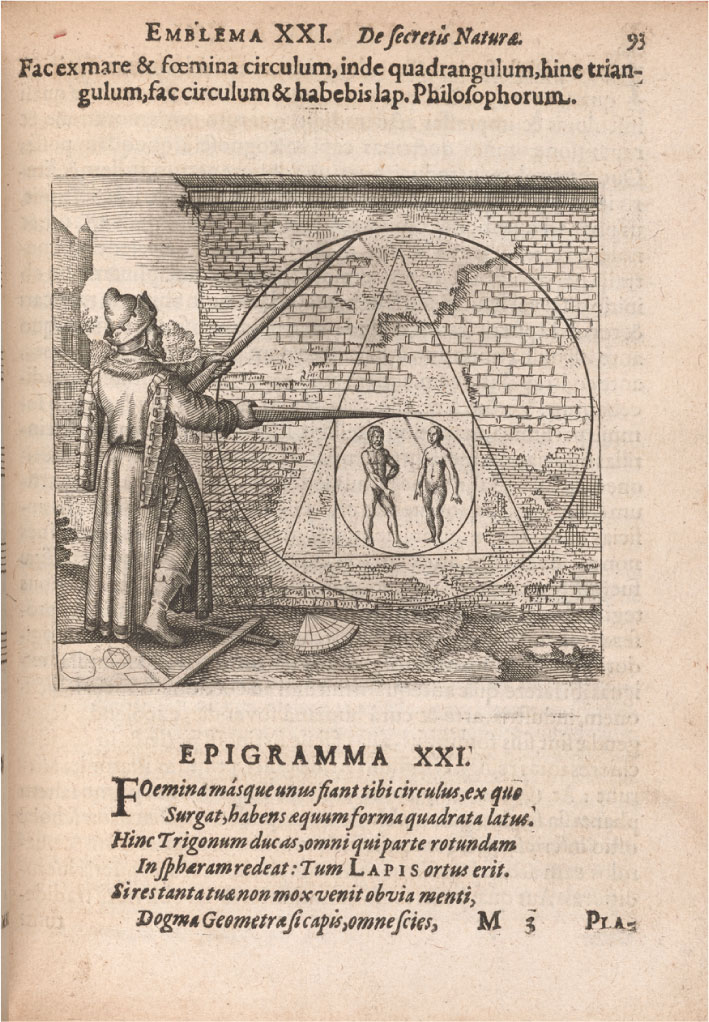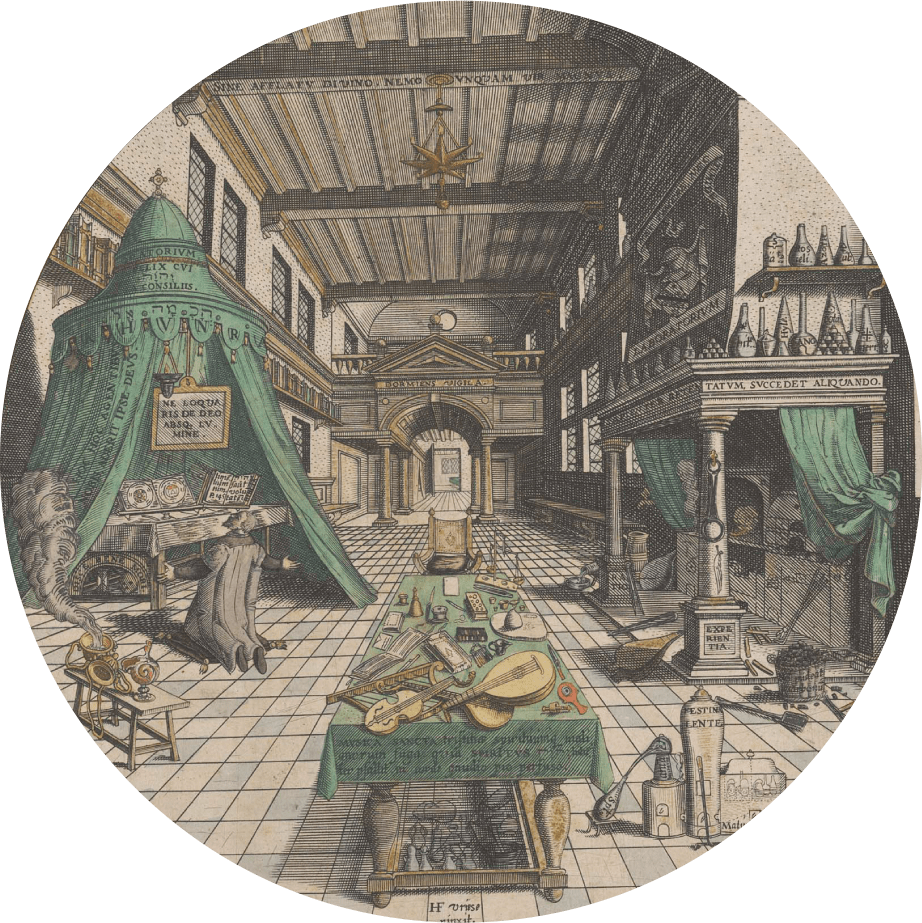Primary Sources
Andreae, Johann Valentin. Mythologiae Christianae sive virtutum et vitiorum vitae humanae
imaginum libri tres. Strassburg, 1619.
Aristotle. Complete Works of Aristotle: The Revised Oxford Translation. Edited by Jonathan
Barnes. Princeton, NJ: Princeton University Press, 1984.
Bornitz, Jakob. Tractatus politicus de rerum sufficientia in republica et civitate procuranda.
Frankfurt, 1625.
Buteo [Borrel], Joannes. De quadratura circuli libri duo. Lyon, 1559.
Catena, Pietro. Universa loca in logicam Aristotelis, in mathematicas disciplinas. Venice, 1556.
Christmann, Jakob. Tractatio geometrica de quadratura circuli. Frankfurt, 1595.
Cusanus. De quadratura circuli, published with Johannes Regiomontanus, De triangulis
omnimodis libri quinque. Edited by Johannes Schöner. Nuremberg, 1533.
De alchimia opuscula complura veterum philosophorum [. . .] Rosarium philosophorum.
Frankfurt, 1550.
Descartes, René. Oeuvres de Descartes. Edited by Charles Adam and Paul Tannery, 12 vols. Paris:
Léopold Cerf, 1897–1913.
Regulae ad directionem ingenii. In The Philosophical Writings of Descartes,
Volume I. Edited and translated by John Cottingham, Robert Stoothoff, and Dugald Murdoch. Cambridge:
Cambridge University Press, 1984.
Erasmus. Erasmi Opera omnia, II.2: Adagiorum chilias I, centuriae VI–X. Edited by Miekske L.
van Poll-van de Lisdonk and Maria Cytowska. Amsterdam: Elsevier, 1998.
Estienne, Henri, ed. Anacreontis Teii odae. Paris, 1554.
Khunrath, Heinrich. Amphitheatrum sapientiae aeternae, solius verae. Hamburg, 1595.
Lefèvre d’Étaples, Jacques. Libri logicorum ad archteypos recogniti. Paris, 1503.
Maier, Michael. Atalanta fugiens, hoc est, emblemata nova de secretis naturae chymica.
Oppenheim, 1618.
“Atalanta running, that is, new chymicall emblems relating to the secrets of nature.” 1618
or after. Mellon Alchemical Collection 48. Beinecke Library, Yale University.
De circulo physico quadrato. Oppenheim, 1616.
Pancirolli, Guido, and Heinrich Salmuth, Nova reperta sive Rerum memorabilium, recens
inventarum, et veteribus plane incognitarum. Amberg, 1602.
Symeoni, Gabrieli. Les divises ou emblemes heroiques. Antwerp, 1561.
Uffenbach, Philipp. De quadratura circuli mechanici. Frankfurt, 1619.
van Ceulen, Ludolph. De circulo et adscriptis liber. Leiden, 1619.
Secondary Sources
Ashworth, William B. “The Habsburg Circle.” In Patronage and Institutions: Science, Technology,
and Medicine at the European Court, 1500–1750, edited by Bruce T. Moran, 137–67. Boydell Press, 1991.
Böhme, Gernot, and Hartmut Böhme. Feuer, Wasser, Erde, Luft: Eine Kulturgeschichte der
Elemente. München: Beck, 1996.
Chen-Morris, Raz. Measuring Shadows: Kepler’s Optics of Invisibility. University Park, PA: The
Pennsylvania State University Press, 2016.
de Jong, H. M. E. Michael Maier’s “Atalanta fugiens”: Sources of an Alchemical Book of
Emblems. Leiden: E. J. Brill, 1969.
Dickson, Donald R. The Tessera of Antilia: Utopian Brotherhoods and Secret Societies in the
Early Seventeenth Century. Leiden: E. J. Brill, 1998.
Fankhauser, Regula. “Visuelle Erkenntnis. Zum Bildverständnis des Hermetismusin der Frühen
Neuzeit.” Image 5 (2007): 20–36.
Figala, Karin, and Ulrich Neumann. “‘Author Cui Nomen Hermes Malavici’: New Light on the
Bio-Bibliography of Michael Maier (1569–1622).” In Alchemy and Chemistry in the 16th and 17th
Centuries, edited by Piyo Rattansi and Antonio Clericuzio, 121–47. Dortrecht: Springer, 1994.
Ganzenmüller, Wilhelm. Die Alchemie im Mittelalter. Paderborn: Bonifacius, 1938.
Goulding, Robert. “Polemic in the Margin: Henry Savile against Joseph Scaliger’s Quadrature of the
Circle.” In Scientia in margine: études sur les “marginalia” dans les manuscrits scientifiques du Moyen
Age à la Renaissance, edited by Danielle Jacquart and Charles Burnett, 241–59. Geneva: Droz, 2005.
“Studies on the Mathematical and Astronomical Papers of Sir Henry Savile.”
PhD diss., Warburg Institute, University of London, 1999.
Harrison, Peter. The Fall of Man and the Foundations of Science. Cambridge:
Cambridge University Press, 2007.
Heath, Sir Thomas Little. Mathematics in Aristotle. Oxford: Clarendon Press, 1949.
Hoffmann-Axthelm, Dagmar. “David Musicus, or: On the Consoling Power of String Music.” In
Essays on Renaissance Music in Honour of David Fallows: Bon Jour, Bon Mois et Bonne Estrenne, edited
by Fabrice Fitch and Jacobijn Kiel, 326–37. Woodbridge: Boydell Press, 2011.
Jesseph, Douglas M. Squaring the Circle: The War Between Hobbes and Wallis. Chicago:
University of Chicago Press, 1999.
Keller, Vera. “Accounting for Invention: Guido Pancirolli’s Lost and Found Things and the
Development of Desiderata.” Journal of the History of Ideas 73, no. 2 (2012): 223–45.
Knowledge and the Public Interest, 1575–1725. New York: Cambridge University
Press, 2015.
Laube, Stefan. “Bilder aus der Phiole: Anmerkungen zur Bildsprache der Alchemie.” In
Goldenes Wissen. Die Alchemie — Substanzen, Synthesen, Symbolik, edited by Petra Feuerstein-Herz and
Stefan Laube, 73–86. Wiesbaden: Harrassowitz, 2014.
Leibenguth, Erik. Hermetische Poesie des Frühbarock: Die “Cantilenae intellectuales” Michael
Maiers. Tübingen: Max Niemeyer, 2002.
Marr, Alexander, Raphaële Garrod, José Ramón Marcaida, and Richard Oosterhoff.
Logodaedalus: Word Histories of Ingenuity in Early Modern Europe. Pittsburgh: University of Pittsburgh
Press, 2019.
Mehl, Édouard. Descartes en Allemagne: 1619–1620: le contexte allemand de l’élaboration de
la science cartésienne. Strasbourg: Presses Universitaires de Strasbourg, 2001.
Montucla, Jean Etienne. Histoire des recherches sur la quadrature du cercle. Edited by Silvester
François Lacroix. Paris, 1831.
Moran, Bruce T. The Alchemical World of the German Court: Occult Philosophy and Chemical
Medicine in the Circle of Moritz of Hessen. Princeton, NJ: Princeton University Press, 1991.
Morgan, Augustus de. A Budget of Paradoxes. London, 1872.
Principe, Lawrence M. “Revealing Analogies: The Descriptive and Deceptive Roles of Sexuality
and Gender in Latin Alchemy.” In Hidden Intercourse: Eros and Sexuality in the History of Western
Esotericism, edited by Wouter J. Hanegraaff and Jeffrey John Kripal, 209–29. Leiden: E. J. Brill, 2008.
Rabouin, David. Mathesis Universalis: L’idée de “mathématique universelle” d’Aristote à
Descartes. Paris: Épiméthée, 2009.
Rudio, Ferdinand. Archimedes, Huygens, Lambert, Legendre [. . .] Problemes von der Quadratur
des Zirkels. Leipzig, 1892.
Shea, William R. The Magic of Numbers and Motion: The Scientific Career of René Descartes.
Canton, MA: Science History Publications, 1991.
Smith, Pamela H. The Body of the Artisan: Art and Experience in the Scientific Revolution.
Chicago: University of Chicago Press, 2004.
Tilton, Hereward. The Quest for the Phoenix: Spiritual Alchemy and Rosicrucianism in the Work
of Count Michael Maier (1569–1622). Berlin: De Gruyter, 2003.
Wesseling, Ari. “Devices, Proverbs, Emblems: Hadrianus Junius’ Emblemata in the Light of
Erasmus’ Adagia.” In The Kaleidoscopic Scholarship of Hadrianus Junius (1511–1575): Northern Humanism at
the Dawn of the Dutch Golden Age, edited by Dirk van Miert, 214–59. Leiden: E. J. Brill, 2011.


 Add to Collection
Add to Collection





